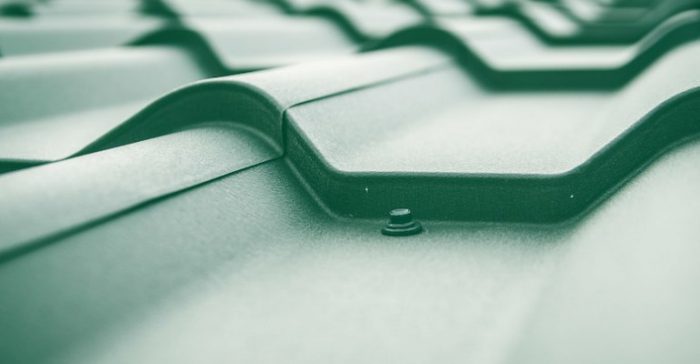Jeff Perkins, ERS, for Zondits
Anyone who has ever felt the warmth of the sun on their face or covered their tomato plants to protect them from frost has, whether knowingly or unwittingly, experienced the power of radiative heat transfer. Traveling virtually unimpeded through space, the warmth of the sun reaches our skin – yet simply blocking the view so the tomatoes don’t “see” the sky is enough to shut it down. When any object has a clear view of the sky, day or night, the ability to transfer heat in either direction is enormous.
Surface emissivity, heat transfer films, and other ideas to enhance these effects in one direction or another have been developed and deployed in specific applications for years. But as the article below describes, Doctors Yang and Yin have come up with a new material that is reported to be low-cost, easily manufactured, and – of most interest to Zondits – potentially widely applicable for buildings. As reported, the sheets of material have specially tuned radiative properties, can be manufactured using inexpensive roll-to-roll processes, and when deployed on rooftops could provide radiative cooling, even in direct sunlight.
As with any “technology of the future,” there are details to work out, but assuming that the facts of the piece are accurate, I could imagine replacing air conditioning compressor power with the immense power of radiative heat transfer.
Interestingly, it raises a potential future conundrum. Fast-forward to a future where this film is real and abundant. A theoretical choice then becomes deployment of 93 watts per square meter (daytime, “more at night”) heat transfer material, versus installing 200 watts per square meter (daytime, zero at night) PV generation. I ask the Zondits readers, assuming today’s costs and that these systems are mutually exclusive, what will be the better use of my rooftop?
[bctt tweet=”A @CUBoulder team claims their radiative rooftop film cools a home to 20°C when it’s 37°C outside.” username=”ZonditsEE”]
How to keep cool without costing the Earth
The Economist, February 11, 2017
ABOUT 6% of the electricity generated in America is used to power air-conditioning systems that cool homes and offices. As countries such as Brazil, China and India grow richer, they will surely do likewise. Not only is that expensive for customers, it also raises emissions of greenhouse gases in the form both of carbon dioxide from burning power-station fuel and of the hydrofluorocarbons air conditioners use as refrigerants.
As they describe in a paper in this week’s Science, Ronggui Yang and Xiaobo Yin of the University of Colorado, in Boulder, have a possible alternative to all this. They have invented a film that can cool buildings without the use of refrigerants and, remarkably, without drawing any power to do so. Better yet, this film can be made using standard roll-to-roll manufacturing methods at a cost of around 50 cents a square metre.
The new film works by a process called radiative cooling. This takes advantage of that fact that Earth’s atmosphere allows certain wavelengths of heat-carrying infrared radiation to escape into space unimpeded. Convert unwanted heat into infrared of the correct wavelength, then, and you can dump it into the cosmos with no come back.
Dr Yang and Dr Yin are not the first to try to cool buildings in this way. Shanhui Fan and his colleagues at Stanford University, in California, demonstrated a device that used the principle in 2014. Their material, though, consisted of seven alternating layers of hafnium dioxide and silicon dioxide of varying thicknesses, laid onto a wafer made of silicon. This would be difficult and expensive to manufacture in bulk.
Dr Yang’s and Dr Yin’s film, by contrast, was made of polymethylpentene, a commercially available, transparent plastic sold under the brand name TPX. Into this they mixed tiny glass beads. They then drew the result out into sheets about 50 millionths of a metre (microns) thick, and silvered those sheets on one side. When laid out on a roof, the silver side is underneath. Incident sunlight is thus reflected back through the plastic, which stops it heating the building below.
Preventing something warming up is not, though, the same as cooling it. The key to doing this is the glass beads. Temperature maintenance is not a static process. All objects both absorb and emit heat all the time, and the emissions are generally in the form of infrared radiation. In the case of the beads, the wavelength of this radiation is determined by their diameter. Handily, those with a diameter of about eight microns emit predominantly at wavelengths which pass straight through the infrared “window” in the atmosphere. Since the source of the heat that turns into this infrared is, in part, the building below, the effect is to cool the building.
That cooling effect, 93 watts per square metre in direct sunlight, and more at night, is potent. The team estimates that 20 square metres of their film, placed atop an average American house, would be enough to keep the internal temperature at 20°C on a day when it was 37°C outside.
To regulate the amount of cooling, any practical system involving the film would probably need water pipes to carry heat to it from the building’s interior. Manipulating the flow rate through these pipes as the outside temperature varied would keep the building’s temperature steady. Unlike the cooling system itself, these pumps would need power to operate. But not much of it. Other than that, all the work is done by the huge temperature difference, about 290°C, between the surface of the Earth and that of outer space.

very “cool”. nice piece on the technology here. http://www.pnnl.gov/main/publications/external/technical_reports/PNNL-24904.pdf